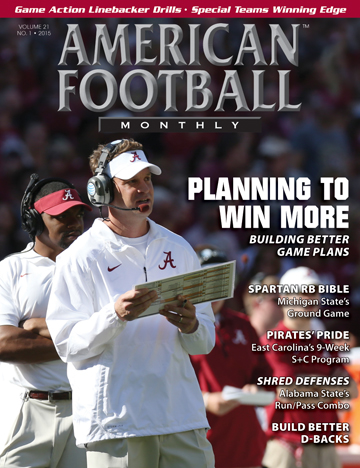Article CategoriesAFM Magazine
|
Running Ahead of Speed – Technical Foundation, the Heart of the Matter (Part III)by: Dale BaskettFootball Speed Specialist © More from this issue What’s important for enhancing team speed for football? Too often, coaches don’t understand what skills help effectively produce football acceleration, change velocities and deliver burst capability. The essential skills are just that – essential. To produce these skills, you must realize that the bottom line is dependent on a sound foundational movement premise. Foundation simply refers to one fact that overrides all other factors; that is, technical application. Technique must always be the first thought when performing or coaching an athlete to run fast. Your foundation is built from technical principles that you use daily and weekly to process the motor patterns necessary for high frequency movement.
|
|
|||||||
| HOME |
MAGAZINE |
SUBSCRIBE | ONLINE COLUMNISTS | COACHING VIDEOS |
Copyright 2026, AmericanFootballMonthly.com
All Rights Reserved





